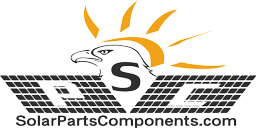
Rubber pad EPDM
Weather-resistant rubber pad for solar panel

Rubber pad EPDM
Weather-resistant rubber pad for solar panel

Rubber pad EPDM
Weather-resistant rubber pad for solar panel

Rubber pad EPDM
Weather-resistant rubber pad for solar panel

Rubber pad EPDM
Weather-resistant rubber pad for solar panel
Rubber Pad for Solar Panel: The Unsung Hero of Stable & Durable PV Systems
When it comes to solar panel installations, every component plays a critical role in ensuring long-term performance—and the rubber pad for solar panel is no exception. Often overlooked, this small but mighty accessory acts as a buffer, protector, and stabilizer, addressing common challenges like vibration damage, surface scratches, and weather-induced wear. Whether you’re setting up a residential rooftop system or a large-scale solar farm, choosing the right one for mounting can extend the lifespan of your PV equipment and reduce maintenance costs—aligning with best practices for reliable solar setups recommended by industry bodies like the Solar Energy Industries Association (SEIA).
1. Product Description: What Is a Rubber Pad for Solar Panel?
It is a flexible, durable accessory designed specifically to support, cushion, and protect solar panels and their mounting systems. Crafted from high-performance rubber materials—including EPDM, silicone, and TPV—these pads are engineered to withstand harsh outdoor conditions, from extreme temperatures to UV radiation, meeting durability standards for outdoor PV components.
Our weather-resistant version comes in various sizes, thicknesses, and configurations to fit different installation needs:
- Standard sizes (e.g., 50x18mm, 40x40mm) for quick compatibility with most mounting brackets.
- Custom-cut options for unique solar tracker rails or irregularly shaped panel feet.
- Adhesive-backed variants for easy, tool-free installation on rooftop surfaces or ground mounts.
- Thickness: 2mm for enhanced shock absorption, ideal for inverter base protection.
2. Application: Where to Use It?
The versatility of this accessory makes it indispensable across all types of PV installations. Here are its key use cases, aligned with common setups outlined by International Energy Agency (IEA) Solar PV Guidelines:
Residential Rooftop Installations
- Place non-slip variants between the panel frame and rooftop shingles/tiles to prevent scratches and slippage.
- Use shock-absorbing types for panel feet to reduce vibration from wind, protecting both the panels and the roof structure.
Commercial Solar Farms
- Line ground mount brackets with it to stabilize panels on uneven terrain and prevent soil erosion around the base.
- Install UV-resistant options for solar tracker moving parts to minimize friction and wear on mechanical components.
Specialized PV Systems
- For coastal areas: Use salt-spray resistant models to combat corrosion from sea air.
- For cold climates: Opt for low-temperature variants that remain flexible in freezing conditions.
- For off-grid setups: Pair with solar battery rack pads to protect energy storage units from impact.
Category: Rubber pad

